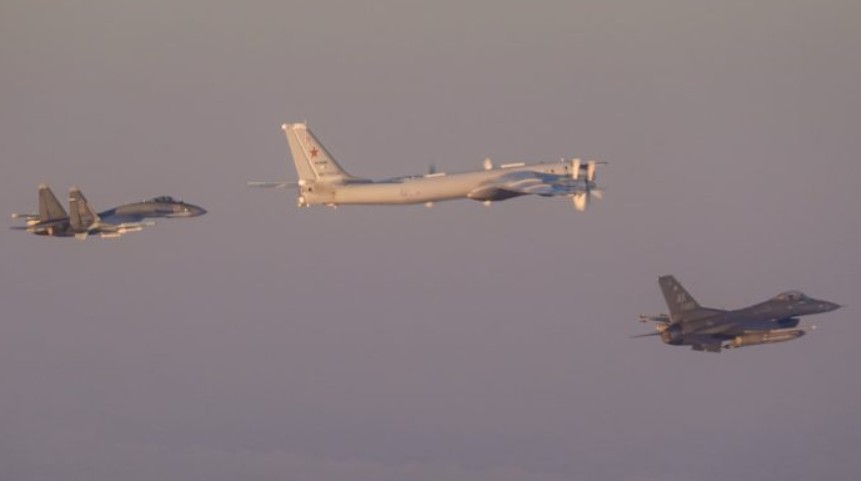Multiple Russian Fighter Jets Intercepted Over Alaska and Baltic Sea Following Trump Comments
In a tense series of events this week, Russian aircraft were interdicted in both the Alaska Air Defense Identification Zone( ADIZ) and over the Baltic Sea, days after U.S. President Donald Trump suggested NATO should consider shooting down intruding Russian aircraft.
The first hassle took place on 24 September 2025, when NORAD scrambled F-16s to block two Tu-95 Bear bombers and two Su-35 fighters near Alaska.
The alternate, on 25 September, saw three MiG-31s, a Su-35, and a Su-30 interdicted by Hungarian Gripens stationed over Lithuania, close to Latvian airspace.
Trump’s Comments Stir Debate
The interceptions followed President Trump’s remarks at the United Nations General Assembly in New York on 23 September.
Meeting Ukrainian President Volodymyr Zelenskyy, Trump was asked:“Do you think that NATO countries should shoot down Russian aircraft if they enter their airspace?”
Trump responded: “Yes, I do.”
When pressed about whether the U.S. would support NATO allies in such a scenario, he added: “It depends on the circumstance.”
European leaders have echoed similar sentiments. European Commission President Ursula von der Leyen told CNN:
“My opinion is we have to defend every square centimeter of the territory. That means if there is an intrusion in the airspace, after warning, after being very clear, of course, the option of shooting down a fighter jet that is intruding on our airspace is on the table.”
Polish Foreign Minister Radoslaw Sikorski and Estonian official Marko Mihkelson publicly supported the stance after recent incursions by Russian jets and drones over their airspace, similar to the Russian drone breach in Poland that triggered a NATO response last month.
Alaska ADIZ Intercept
On 24 September, NORAD reported detecting a Russian formation comprising two Tu-95 Bears and two Su-35 fighters over the Bering Sea, inside the Alaska ADIZ.
Four F-16s from Eielson Air Force Base scrambled to intercept, supported by KC-135 tankers and an E-3 AWACS aircraft.
F-16 pilots confirmed the Russian aircraft remained in international airspace. Photos released showed the U.S. fighters flying close to the Russian formation.
NORAD noted: “Such Russian activity near Alaska occurs regularly and is not seen as a threat.”
Roger that. https://t.co/SPs85U7yPd
— Radosław Sikorski (@sikorskiradek) September 23, 2025
This marks the ninth intercept near Alaska, following an unusually busy August that saw four intercepts in just one week.
The operations coincided with the Northern Edge military exercise, which often attracts electronic surveillance aircraft like the Il-20 “Coot,” designed for intelligence gathering.
Baltic Sea Intercept
The following day, NATO flew Hungarian Gripens grounded in Šiauliai, Lithuania, to block Russian spurs near Latvia. The conformation consisted of three MiG-31s, a Su-30, and a Su-35.
NATO stated the aircraft were flying near Allied airspace without complying with international flight safety rules.
Although NATO didn’t specify the exact route or supporting means, similar incidents generally involve aircraft operating without a filed flight plan, no radio contact, and transponders switched off.
The Gripens attended the conformation safely down from NATO airspace. Experts say these incidents punctuate ongoing pressures in Northern Europe and Alaska, as NATO continues its air policing operations.
The coincidental timing, just after Trump’s high-profile statements, has reignited debates about NATO’s rules of engagement and collaborative defence in the face of Russian air provocations.
For UK compendiums, the events emphasize the global reach of Russian military aeronautics and the strategic significance of covering both the Arctic and Baltic regions.






